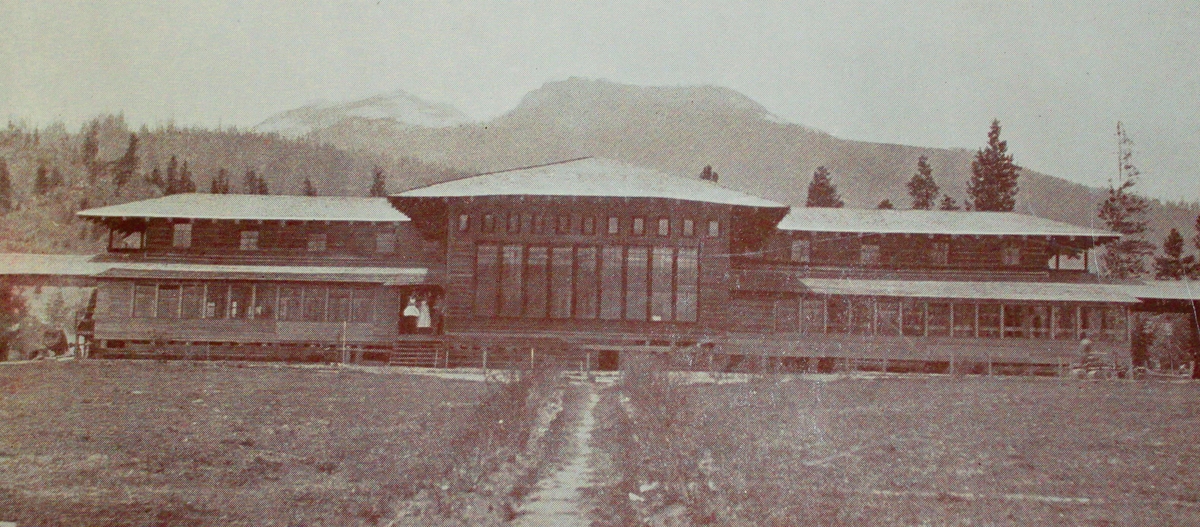By SUZANNE WARING
Today, we don’t think twice about seeing a freight train or even an occasional Amtrak passenger train. But in the latter part of the 19th century, railroads were slow in coming to Montana, hampering the Montana Territory from emerging beyond its frontier status.
Unlike most of the country, which benefitted from access to railroad services in the 1870’s, much of Montana’s scant population lived isolated in the mineral-rich southwest region of the territory. Freight shipped in and ore shipped out either by freight wagons or stagecoach via the two main distribution points: Fort Benton, where the steamboats docked, or Corinne, Utah, the best connection to the intercontinental Union Pacific Railroad.
Even though the Diamond R Freight Line, which was a front-runner in the state for freighting, was usually on time and efficient, compared to the railroad, its oxen trains were slow and limited. People traveled by horseback, wagons, or stage lines, which lacked comfort and were dangerous.
Two railroad companies—Union Pacific and Northern Pacific—saw the advantage of bringing their railroads into Montana to profit from the agriculture but mostly from the extraction of ore. Both railroads wanted to dominate.
The Union Pacific was already a transcontinental railroad, and the Northern Pacific was aimed to connect the Northwest with the rest of the country via Minneapolis.
The practical way to bring railroad service to Montana was for Union Pacific to build a spur line from Corinne, Utah, to mineral-rich Butte via the route freight companies had been using. Called the Utah and Northern Railroad, this narrow-gauge feeder line was built over Monida Pass in 1880. It became one of the longest, narrow-gauge railroads ever built. The first train arrived in Butte in December 1881.
Eventually a spur was built to Anaconda and then on to Garrison Junction by September 23, 1883. For the first time, Montanans had year-round transportation in and out of the state. With the involvement of many workers, the line was widened to standard gauge in one single day on July 24, 1887. This line is still being used today.
Around the same time, Northern Pacific was making inroads into Montana from the East. The goal was a transcontinental railroad traversing across Montana.
The charter for Northern Pacific construction was issued in 1864. The federal government gave the railroad 40 sections of land per mile of track in an alternate checkerboard pattern along the proposed route through what was still unsettled territory.
Northern Pacific held nearly 2,300-square miles of federal land grants in Montana Territory, thus becoming the largest private land owner in what would soon become the state of Montana.
As the railroad pushed west from Minneapolis, the Panic of 1873 stopped progress at Bismarck, North Dakota, for six years.The march westward gained momentum once again in 1879, and soon work began along the Yellowstone River.
At the same time, the line advanced into Montana from the West. The gold spike for this railroad was driven at Independence Creek near the town of Gold Creek on September 8, 1883, two years after the first Union Pacific locomotive entered Butte.
Considered the first transcontinental rail route in Montana, the Northern Pacific gave Montanans access to a direct East-West route across the country. Because of its route of over 700 miles across Montana, it also gave state residents better access to communities.
The Northern Pacific line across Montana is still used today and is owned by Burlington Northern Santa Fe. Most of the track is under lease to Montana Rail Link.
When the two railroads laid tracks across Montana, folks celebrated with exuberance. Martha Edgerton Rolfe, who was the daughter of the first Montana territorial governor, recounted later that she wept with joy when the first locomotive pulled into the station near her Montana home.
The two railways negotiated an agreement that Northern Pacific would refrain from going into Butte, and Union Pacific would stay out of Helena. If Montanans had hoped the two railroads would compete for business—bringing down transportation prices—they were disappointed.
The two companies jointly built a spur line, called the Montana Union line, to connect the two railroads for the exchange of passengers at Garrison Junction, which was named for William Lloyd Garrison, who was an abolitionist and father-in-law of Northern Pacific’s president, Henry Villard.
With the completion of the Union Pacific and Northern Pacific railroads, Montana started catching up with the rest of the country. J. J. Hill eventually brought the Great Northern across the high line.
By the late 1890’s, Montana mirrored the rest of the country in having access to the services that railroads had to offer. MSN









